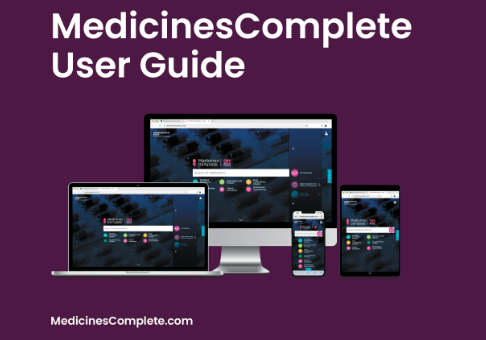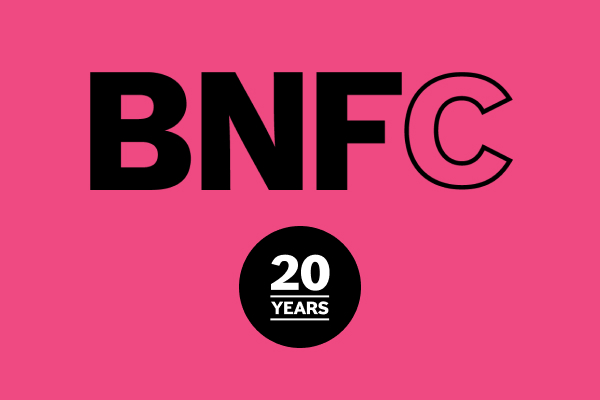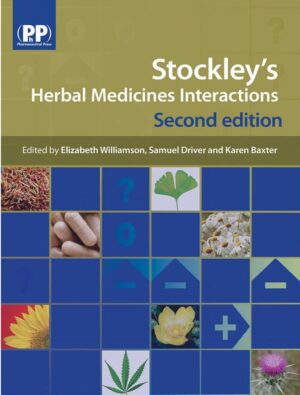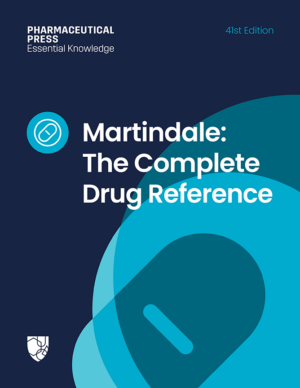14th October 2025
Stockley’s Herbal Medicines Interactions
Minor updates to the content on St John’s wort have…


Psychotropic Drug Directory supports the optimal and rational use of medicines, to improve the quality of life for people with mental health needs.
Close
Close

Contact our team to see how our services can directly help you.
Close

For new and experienced users, get the most out of your access to MedicinesComplete with our handy tips and shortcuts. Save time and get to the information you need quickly.
Close

Register for this webinar to learn how MedicinesComplete can support you in implementing effective processes to reduce medication errors and improve patient safety.
Close

How has BNFC evolved over the last 20 years to become the first choice for concise medicines information for children?
Close


Practical, evidence-based guidance on the interactions of herbal medicines, dietary supplements, and nutraceuticals with conventional medicines.
Stockley’s Herbal Medicines Interactions reliably supports health professionals prevent and manage herb-drug interactions, enhancing patient safety.
Developed by a team of experts in the fields of drug interactions, clinical herbal medicines, phytopharmacovigilance and regulation of herbal medicinal products.
Just like one drug can change the effects of another, herbal medicines can change the effects of a drug, or vice versa. The mechanisms of these interactions sometimes follow that of drug-drug interactions, but at times can differ and be completely unique. Herb-drug interactions are often found incidentally or tested for in experimental or animal studies. This makes it difficult to make robust conclusions on the outcome and severity of any interaction in the clinical setting.
Stockley’s Herbal Medicines Interactions is a reference source that enables clinicians to manage herb-drug interactions safely and effectively. It gives practical, evidence-based guidance on the interactions between herbal and conventional medicines that is easy to access. It is created by a team of experts in drug interactions with a clinical background and therefore provides practical information on the management of these interactions, enhancing patient safety. In addition to highly structured and rigorously researched interactions monographs, Stockley’s Herbal Medicines Interactions contains herb nomenclature and pharmacopoeial information, as well as details on constituents, common uses, and indications.
Many herbs have the potential to interact with drugs, and there is no definitive list of which herbal medicines interact with drugs. Stockley’s Herbal Medicines Interactions aims to give the user a comprehensive analysis of over 200 commonly available herbal medicines, nutraceuticals, or dietary supplements and their interactions with conventional drugs.
One example is the interaction between garlic and warfarin. It has been reported that an increase in anticoagulant effects of warfarin has occurred in some patients taking garlic supplements.
There is significant variability across herbal products. They contain a mixture of many bioactive compounds which makes it hard to predict the extent of their interactions with drugs. Natural products are also liable to a great deal of variation and, even when standardised to one of more of their constituents, there can still be differences in the numerous other compounds present, and different constituents will affect different metabolic enzymes. As well as the source material, the method by which an extract is made will also affect its composition, and thus its interaction potential. For example, different echinacea preparations are known to inhibit the isoenzyme CYP3A4 to varying extents.
Typically, the herb-drug combinations that should be avoided are those that cause significant harm or where concurrent use is considered to be best avoided. They have often been repeatedly reported in practice and involve high-risk medications, or medications where even small reductions in therapeutic effect are clinically important. One example is the combination of St John’s wort and combined hormonal contraceptives. Some reports state that St John’s wort had only a minimal effect on the exposure to combined hormonal contraceptives. However, contraceptive failure has been reported in some women. Given the consequences of a reduction in therapeutic effect of these drugs, and the variability of bioactive compounds across herbal products, it is advised that women taking combined hormonal contraceptives should avoid the concurrent use of St John’s wort.
Any herb-drug interaction should be evaluated very carefully on a case-by-case basis. The role of Stockley’s Herbal Medicines Interactions is to provide clinicians with evidence-based information about different herbal medicines and their interactions with drugs along with an explanation of the importance and management of any interaction. The clinician can then use this information to guide their actions, which will be individual to any given scenario. The severity of the interaction and the intended benefit should be weighed up, and this will differ from patient to patient.
The interaction monographs carry an adapted form of the drug interaction. Symbols are used in the Stockley’s Interactions Checker to allow the user to quickly understand the action to be taken for a particular herb-drug interaction. The interactions are rated using three separate categories:
These ratings are combined to produce one of five symbols which are displayed in the summary box at the top of each interaction monograph.
Access Stockley’s Herbal Medicines Interactions online via MedicinesComplete. You can contact us for more information about pricing and access information through our sales and upgrade enquiries form.









Access Stockley’s Herbal Medicines Interactions through MedicinesComplete today.
Contact us now for pricing and access information.
Our knowledge products are regularly updated online through MedicinesComplete
14th October 2025
Minor updates to the content on St John’s wort have…
14th October 2025
Minor updates to the content on St John’s wort have been made. Pharmacopoeial information has also been updated.
8th July 2025
Updates to the content on serotonin toxicity have been made…
8th July 2025
Updates to the content on serotonin toxicity have been made to align this publication with Stockley’s Drug Interactions. Pharmacopoeial information has also been updated.
8th April 2025
Updates to the nomenclature of several herbs have been made…
8th April 2025
Updates to the nomenclature of several herbs have been made to align this publication with Martindale: The Complete Drug Reference and Herbal Medicines. Pharmacopoeial information has also been updated.
14th January 2025
Pharmacopoeial information has been updated.
14th January 2025
Pharmacopoeial information has been updated.
8th October 2024
Several herb monographs have been selectively revised. Pharmacopoeial information has…
8th October 2024
Several herb monographs have been selectively revised. Pharmacopoeial information has also been updated.
Revised monographs: Boneset; Echinacea; Elder; Garlic; Skullcap; Thyme.
9th July 2024
One monograph has been selectively revised. Pharmacopoeial information has also…
9th July 2024
One monograph has been selectively revised. Pharmacopoeial information has also been updated.
Revised monograph: Peppermint

Info

Info

Info
See all our printed publications in the Shop.